Retro Replay Review
Gameplay
Amidar’s core mechanic is both deceptively simple and endlessly engaging. You take on the role of a wandering paintbrush tasked with tracing the outlines of small rectangles across a grid-filled level. Each successful lap around a rectangle fills it in with color, gradually revealing the next pattern and bringing you closer to clearing the stage. The tactile satisfaction of completing each shape drives a rhythmic loop that demands both precision and timing.
(HEY YOU!! We hope you enjoy! We try not to run ads. So basically, this is a very expensive hobby running this site. Please consider joining us for updates, forums, and more. Network w/ us to make some cash or friends while retro gaming, and you can win some free retro games for posting. Okay, carry on 👍)
Interspersed with the path-painting challenge are four patrolling enemies who roam the grid in predictable but increasingly aggressive patterns. As the paintbrush, you can temporarily stun or force these foes to jump by flicking them off the track—up to three times per life. This jump move is more than a gimmick; it becomes an essential defensive tool when you find yourself cornered or need a momentary breather to plot your next border run.
As you advance through successive levels, the game dynamics intensify. Enemies speed up, their patrol routes become tighter, and the number of rectangles to paint increases. These escalating challenges ensure that even veterans of the arcade stage find themselves pushing their reflexes to the limit. The balance between methodical painting and quick reactive play creates a dynamic tension that remains fresh over long sessions.
Finally, power-up bonuses sprinkled across the grid reward risk-taking and map awareness. Securing these icons can grant temporary speed boosts, freeze enemies in place, or even immobilize them long enough for a full sweep of the board. These strategic pickups add another layer of planning, ensuring that Amidar isn’t just about rote repetition but also about smart resource management.
Graphics
Visually, Amidar embraces a minimalist arcade aesthetic reminiscent of early 1980s coin-op cabinets. The playfield is rendered in bright, contrasting colors—each rectangle lights up in bold hues once completed, delivering an immediate sense of progress. While the sprites are simple, they are crisp, clear, and easily distinguishable even in the heat of rapid movement.
Enemy designs are charmingly abstract: one resembles a gorilla, another a paintbrush’s arch-nemesis, and the rest take on geometric shapes that pulse when they’re about to speed up or change direction. This visual encoding helps you anticipate enemy behavior at a glance, a boon when dozens of rectangles remain unfilled.
Backgrounds are static, ensuring that your focus never drifts from the grid. However, subtle animations—such as a brush tip that wiggles when idle or enemies that twitch just before a jump—lend personality to the scene. Combined with a clean UI displaying lives and jump-charge count, the presentation remains uncluttered, keeping all attention on the painting-and-evading dance.
While modern gamers accustomed to high-definition textures may find the look retro, Amidar’s graphics are a deliberate callback to arcade purity. The bright palette and straightforward design are more than functional; they reinforce the game’s emphasis on gameplay clarity over visual spectacle.
Story
Though Amidar’s narrative is light, it provides enough context to justify your paintbrush’s mission. As a magical implement created by the eccentric artist Professor Chromatic, your goal is to restore color to a monochrome world haunted by restless sprites and mischievous creatures. Each completed level represents a fragment of the world reclaimed from drabness, pushing back the grayscale gloom.
Enemies are described in the manual as “Chromatic Phantoms” that thrive on stolen pigment. The jump mechanic, therefore, is portrayed as a shock of artistic energy that disorients these sprites, giving you precious seconds to continue your restoration work. This whimsical framing turns each failed attempt into a valiant effort to banish color-thieves, adding a touch of heroic flair to the action.
Between levels, brief interstitial text screens reveal snippets of Professor Chromatic’s eccentric diary entries. These passages celebrate small victories in the fight against desaturation—“Day 7: The purple plains breathe again!”—and build a sense of forward momentum. While the story never intrudes on gameplay, it injects a playful narrative scaffolding that underscores the stakes of each rectangle filled.
Ultimately, the charm lies in the minimalism: you’re a paintbrush on a mission, and every rectangle is a meaningful conquest. This simplicity allows players to project their own narratives onto the grid, whether it’s a quest for perfection, a race against time, or a colorful rebellion against the grayscale tyranny.
Overall Experience
Amidar strikes a compelling balance between accessibility and depth. Newcomers will appreciate the straightforward rules: paint every rectangle, avoid enemies, and use your jump-scare tactic judiciously. Seasoned players, meanwhile, will find plenty of room to refine their strategies, optimize routes, and perfect their timing under increased enemy pressure.
The game’s pacing is excellent. By interleaving calm painting runs with sudden enemy rushes, Amidar cultivates a sense of ebb and flow that keeps adrenaline levels just high enough without overwhelming the player. Lives are fairly distributed, and the jump mechanic’s three-charge system encourages thoughtful use rather than mindless spamming.
Replayability is built into the climb through endless levels. While the core loop remains constant, subtle changes in grid size, enemy behavior, and speed modifiers ensure that no two sessions feel identical. Leaderboards or score-chasing modes further extend the experience for completionists and competitive players alike.
In conclusion, Amidar is a masterclass in distilled arcade design. Its straightforward premise, combined with tight controls and escalating challenges, creates a captivating gameplay loop. Whether you’re seeking a bite-sized retro diversion or a long-term mastery project, this paintbrush adventure delivers color-packed thrills at every turn.
 Retro Replay Retro Replay gaming reviews, news, emulation, geek stuff and more!
Retro Replay Retro Replay gaming reviews, news, emulation, geek stuff and more!
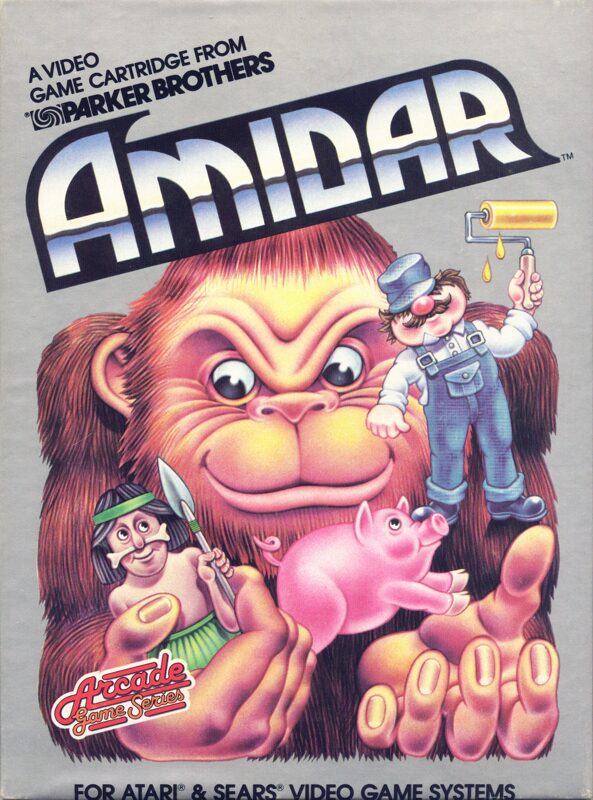
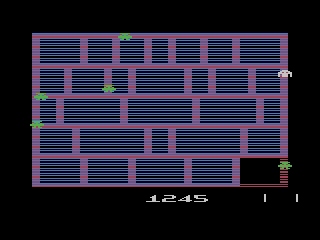
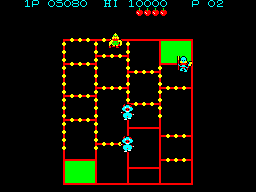
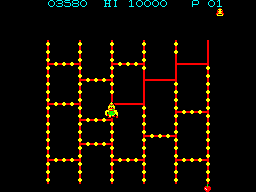
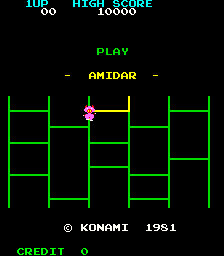




Reviews
There are no reviews yet.